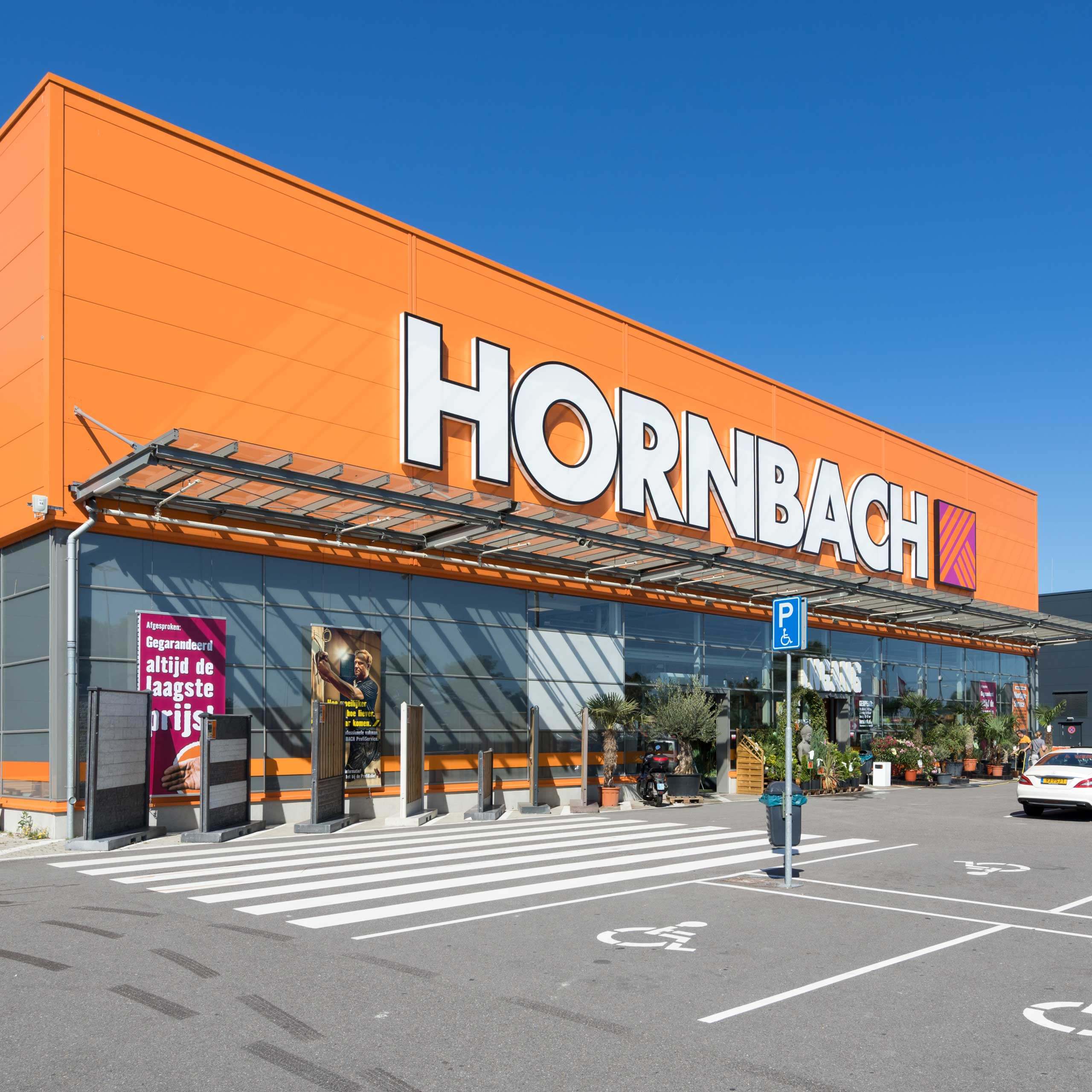Credit: 360b / Shutterstock.com

The home improvement market in the German-speaking world is crowded and full of fierce competition. The regular winner of the raging marketing battles is Hornbach. While its competition focuses largely on efficiency and prices, Hornbach relies on the appeal of a brand with a distinctive profile and quirky commercials. Its success proves Hornbach right. For years, the No. 3 in the German DIY market has regularly won awards, not only for creativity but also for the effectiveness of their campaigns. In 2018, Marketing Manager Karsten Kühn was voted CMO of the Year. What are the principles behind the often whacky charm of the Hornbach brand? Let’s drill down a bit.
The history of Hornbach Baumarkt AG begins in 1877, when Michael Hornbach founded his slate-roofing business in rural Germany. In 1900, his son Michael expanded the business to include building materials, and in 1968, Hornbach’s great-grandchildren opened the first market for building and garden products. Hornbach has been listed on the stock exchange since 1993, but until the end of 2019, the Hornbach family was still running the company in its 5th generation. Only in early 2020 did Steffen Hornbach hand the management over to Erich Harsch, former head of the successful drug chain store DM. Hornbach is currently No. 3 in the highly competitive DIY market segment, with 158 hardware stores and online shops in 9 countries.
Hornbach’s history of unconventional, emotionally charged commercials goes back to the early 2000s. Courageous, humorous, and sometimes polarizing content turns do-it-yourself projects into hero’s journeys, gardening into love stories and sledgehammers into a feminist manifesto. But behind the effects, there is a consistent marketing strategy, which not only earns Hornbach creativity awards but also cements the long-term success of the brand and company in times of competition from Amazon. We looked at the most important pillars of Hornbach’s marketing success.
Customer Focus: a Hero’s Journey
In addition to all their wit and ingenuity, Hornbach’s campaigns have one thing in common – instead of focusing on the brand or communicating low prices, they place Hornbach customers as heroes in the stories of their own everyday lives. It is their experience and goals that Hornbach DIY supports with its products, including good service and, above all, a lot of interaction with the company – in-store and on social media. In its content strategy, Hornbach does not focus on its promotions or its own logo either but enters into a dialogue with its target group.
One example of this is the company’s own German-language magazine “Macher” (“Doer“), which has been published quarterly since 2015 in cooperation with renowned German publishing house Gruner & Jahr. High-quality articles and reports on enthusiast projects and their makers can be purchased at a negligible price. In this way, Hornbach becomes both a projection screen and an enabler of long-cherished dreams. Who could decline this offer?
A Clear Position: a True Core Wrapped in Big Emotions
DIY and gardening products usually lack emotions and uniqueness. However, Hornbach’s way of breathing life into them for its target group makes all the difference. Their world is full of adventure and ironically overblown heroism, but at the same time appeals to a very deep-seated human need – to have a beautiful home. With it comes the desire to create something permanent for yourself, to leave your mark – if you like, to achieve a small piece of immortality.
The main focus is not on hammers and nails, and certainly not on their price, but the beauty of the picture they are used to hang, or the pride in a flowerbed well planted. A positioning that Hornbach conveys through its frequently changing campaigns, but always with the same basic message. The company is no longer perceived as a profit-making entity, but as authentic as “one of us”.
Digitization: Integrating with the Analog World
With Amazon and its unsurpassed product variety becoming a serious competitor in the DIY market, Hornbach has paid special attention to digitization in recent years and counters this threat with a well-developed online offering. Unlike Amazon’s, it is curated by experts, Hornbach argues. Prices remain the same as in the brick-and-mortar stores.
Hornbach also relies on the agility and timeliness of digital when it comes to content. The portraits of passionate do-it-yourselfers, as well as articles on disassembled tools and other relevant topics from the “Macher” magazine, are also available on a dedicated website. The advice you get in the hardware store is completed by instructions, manuals and tips via Instagram, YouTube and other channels. A big, bold investment that has brought Hornbach a recent dent in profits but should pay off in the long run.
Taking Risks: Advertising that Moves – and Sometimes Grates
In its advertising campaigns, Hornbach also repeatedly demonstrates its preference for quirky ideas and current topics. For example, the autumn 2017 campaign showed a woman using a sledgehammer to tear down not only a partition wall but also outdated gender concepts, just in time for #metoo. Its social relevance was picked up by numerous media, while its slogan “We never said it would be easy.” perfectly conveyed the world of Hornbach.
The courage to take risks also opens Hornbach up to missteps. For example, in spring 2019 Hornbach had to pull a campaign spot depicting a young Asian woman ecstatically sniffing sweaty T-shirts belonging to do-it-yourselfers, which had triggered outraged reactions in Korea and was subsequently condemned by the German advertising council. A risk that Hornbach takes again and again. Its reward is a clear brand image that, though not everyone will identify with it, always triggers a reaction.
Hornbach: MARMIND® Top Tips
Focus on the target group – it leads customers to identify with your brand.
Take and maintain a position – a clear attitude sharpens your profile.
Invest in digitization to remain competitive in the future.
This article is based on the following sources (in German):
https://www.fr.de/wirtschaft/wir-sind-schuhgeschaeft-maenner-10963842.html
https://content-marketing.com/content-marketing-bei-hornbach/

